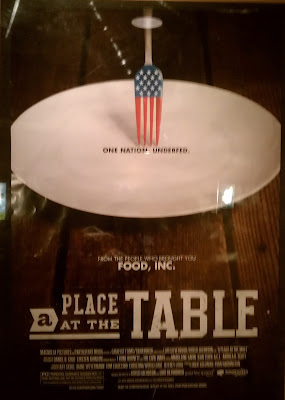Earlier this week, Friend shared with me a video, Wealth Inequality in America, which reinforced my long held beliefs that the huge chasm between those who have and those who have not is getting even bigger. The film based on the work of a Harvard economist revealed that not only are the rich getting richer, but the poor are becoming all but invisible. How can we have become the land where the
- CEO makes 380 times as much as his/her average worker?
- average worker earns for one month what the CEO earns in one hour?
- top 1% earn 24% of the nation's income, but the bottom 50% earn .5%?
- top 1% of the country owns 40% of the country's wealth, and the bottom 80% own 7% (that's not a misprint - I mean 7% not 70%) of the wealth?
Then a picture of what it really is: NOTE - The top 1% would not fit on the slide. In order to show it, the narrator had to cut off what would not fit on the slide and place it beside the right column - it added TEN COLUMNS of wealth to that 1%.
So what has taken me from angry to sad today? a documentary on hunger in the United States - A Place at the Table. In it we learn about food policy in the U.S., where the largest agricultural subsidies go to the giant industrial farms that grow corn, wheat, soy, and grains that feed the processed food industry. These are the industrial giants who spend disgraceful amounts of money to lobby congress to maintain these handouts (only second to the oil companies in spending). In the past thirty years as the price of fresh vegetables and fruits has skyrocketed, the price of junk food (the outcomes of the subsidies) has fallen dramatically. So we have an obese population who are hungry because they cannot afford a decent diet.
The latest edition of UNICEF's report on child poverty in developed countries found that 30 million children in 35 of the world's richest countries live in poverty. Among those countries, the United States ranks second on the scale of what economists call "relative child poverty" -- above Latvia, Bulgaria, Spain, Greece, and 29 others. Only Romania ranks higher, with 25.5 percent of its children living in poverty, compared with 23.1 percent in the U.S.
It is not that we don't have the food, we have millions of people who don't make enough money to purchase the food. How are these children ever to climb out of poverty when their families cannot make a decent wage?
So, who can I call for just five minutes that will take this utter sadness away? Volunteering at Martha's Table isn't really enough.

No comments:
Post a Comment